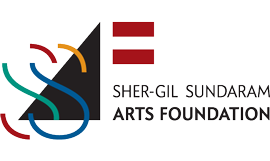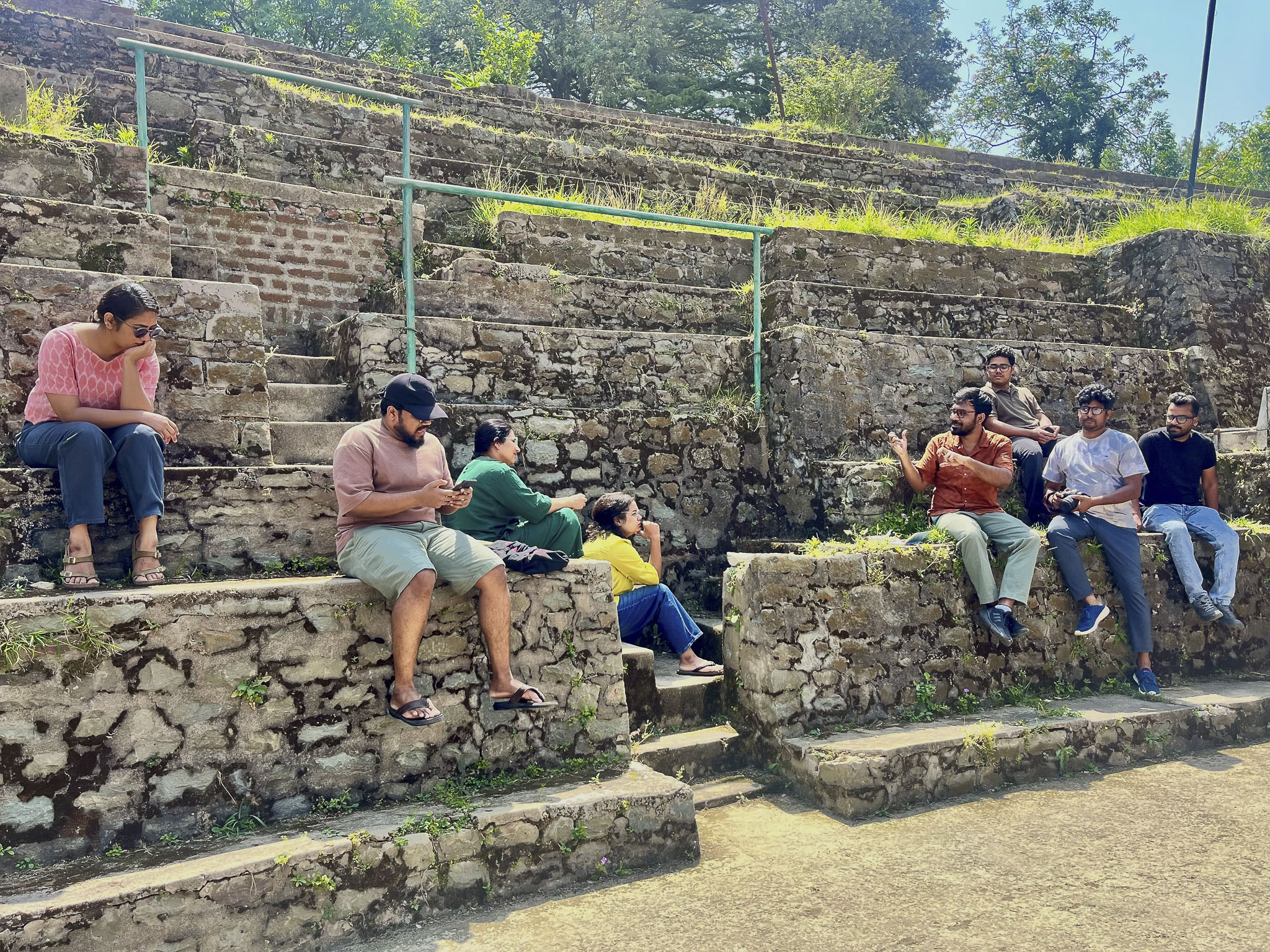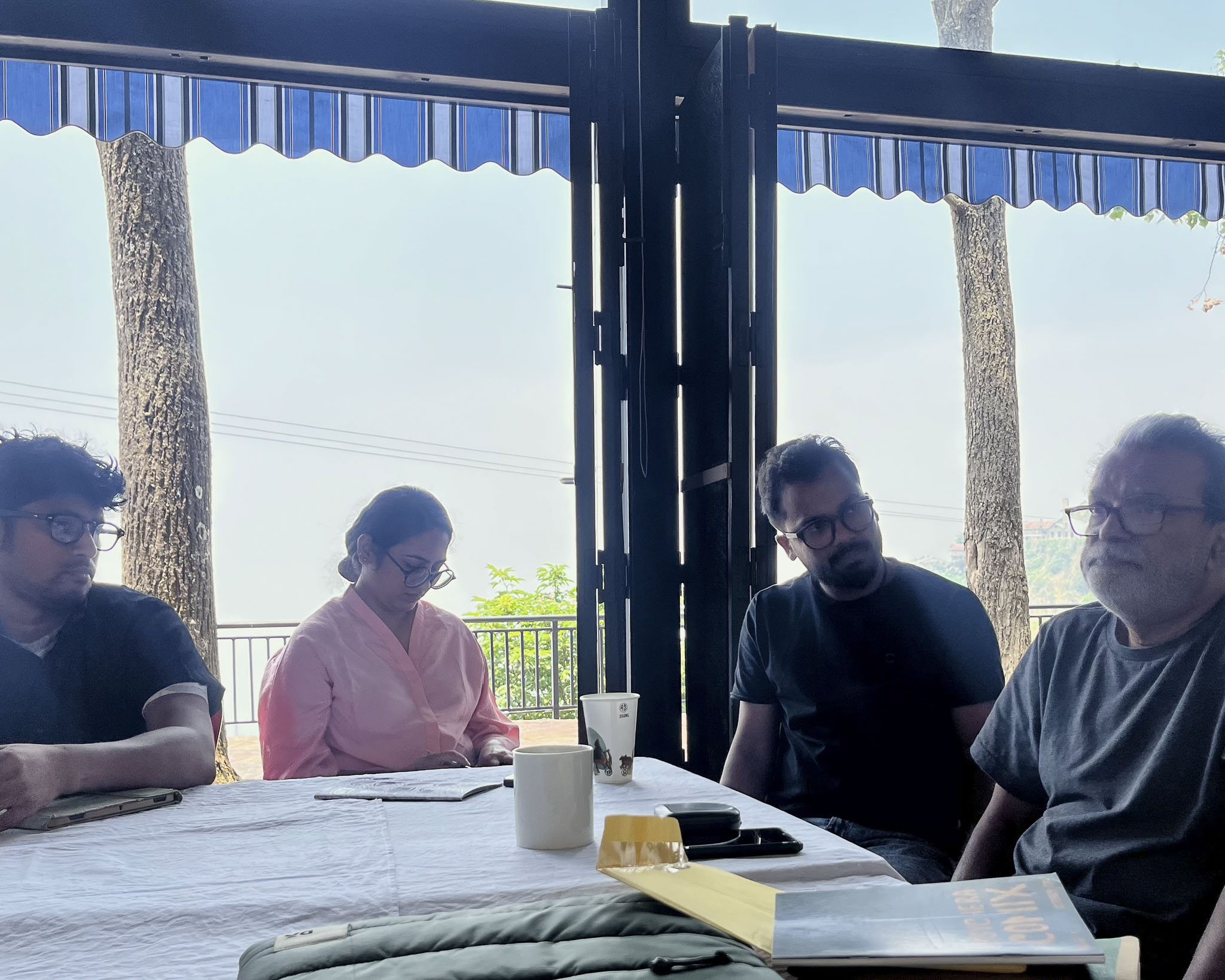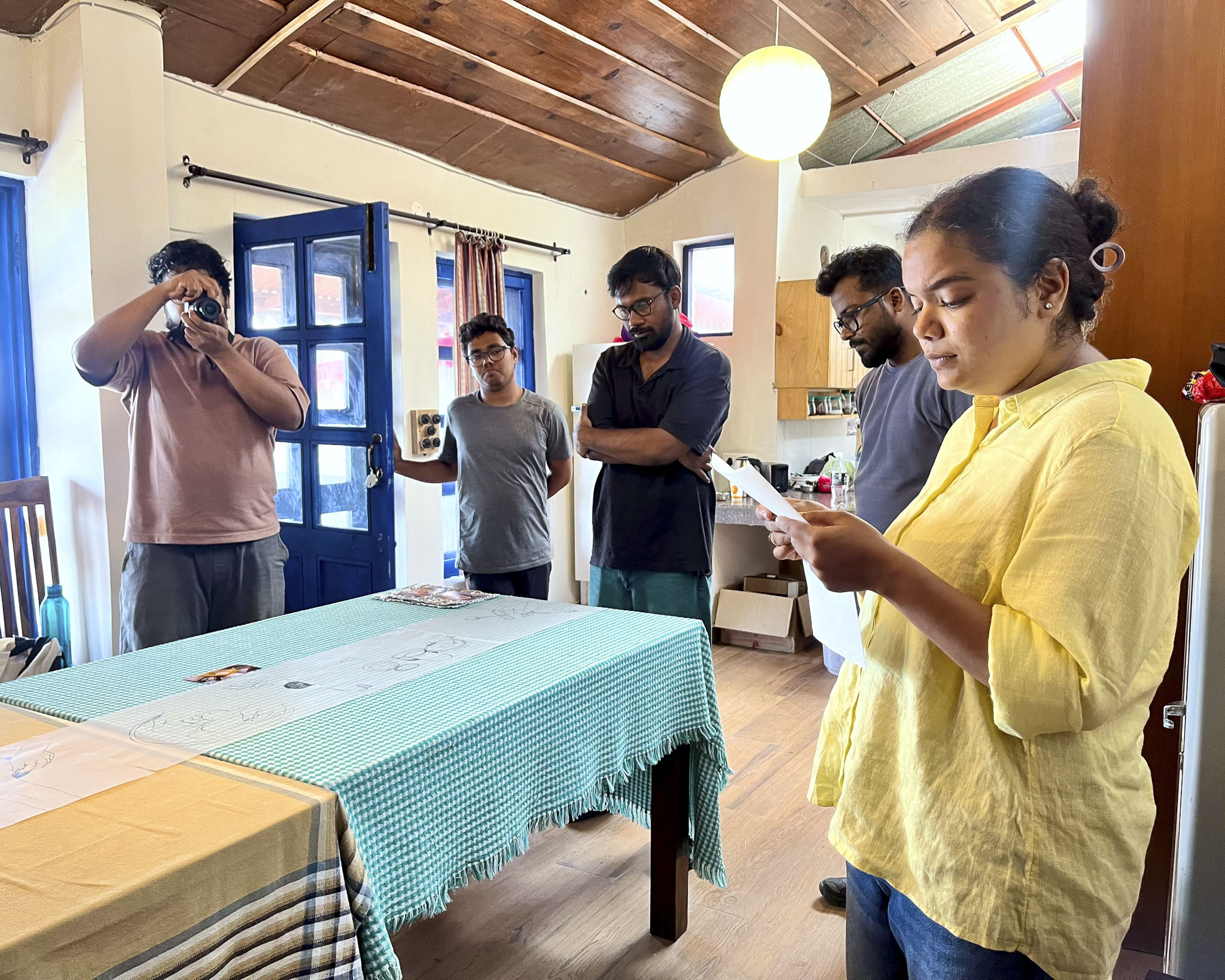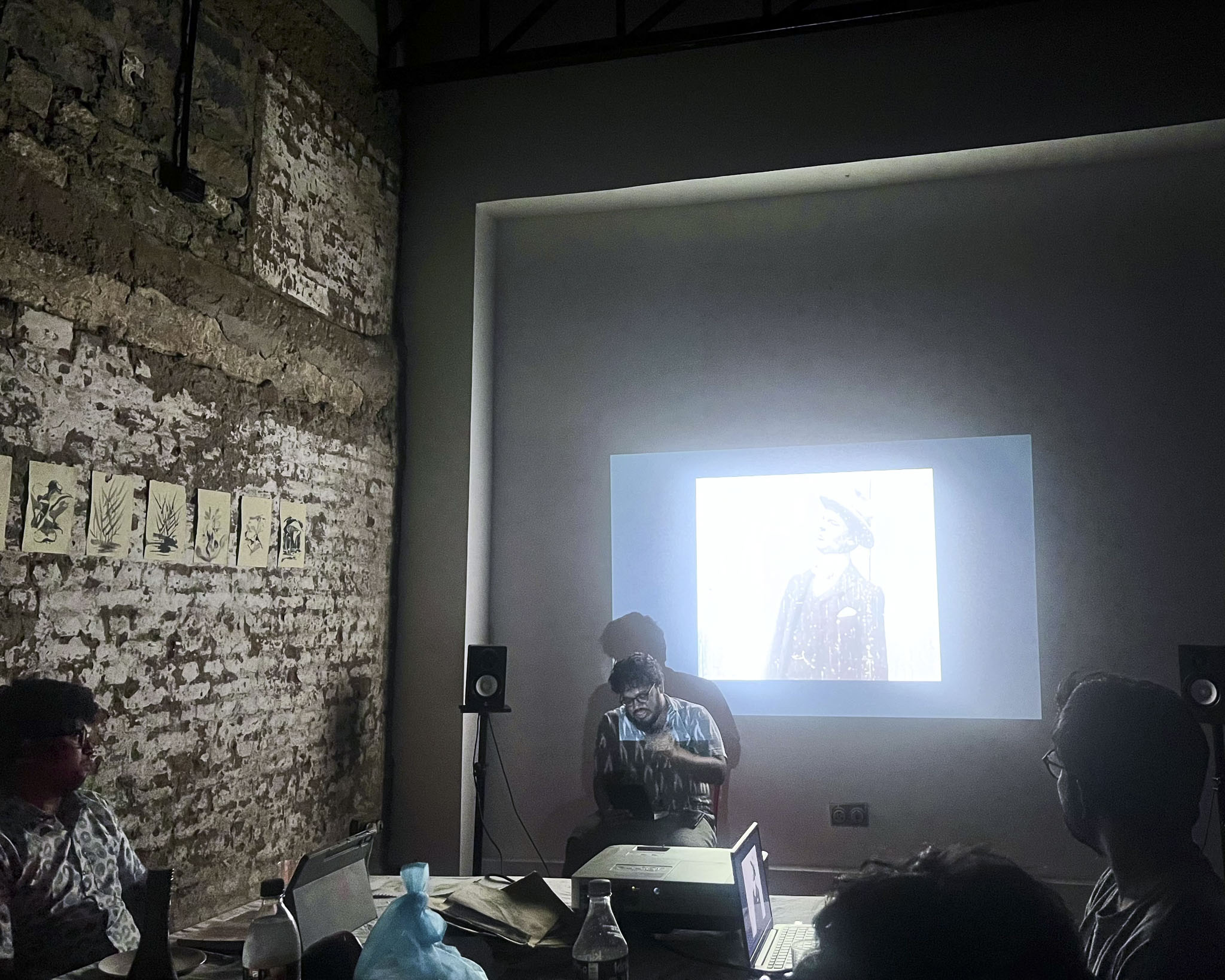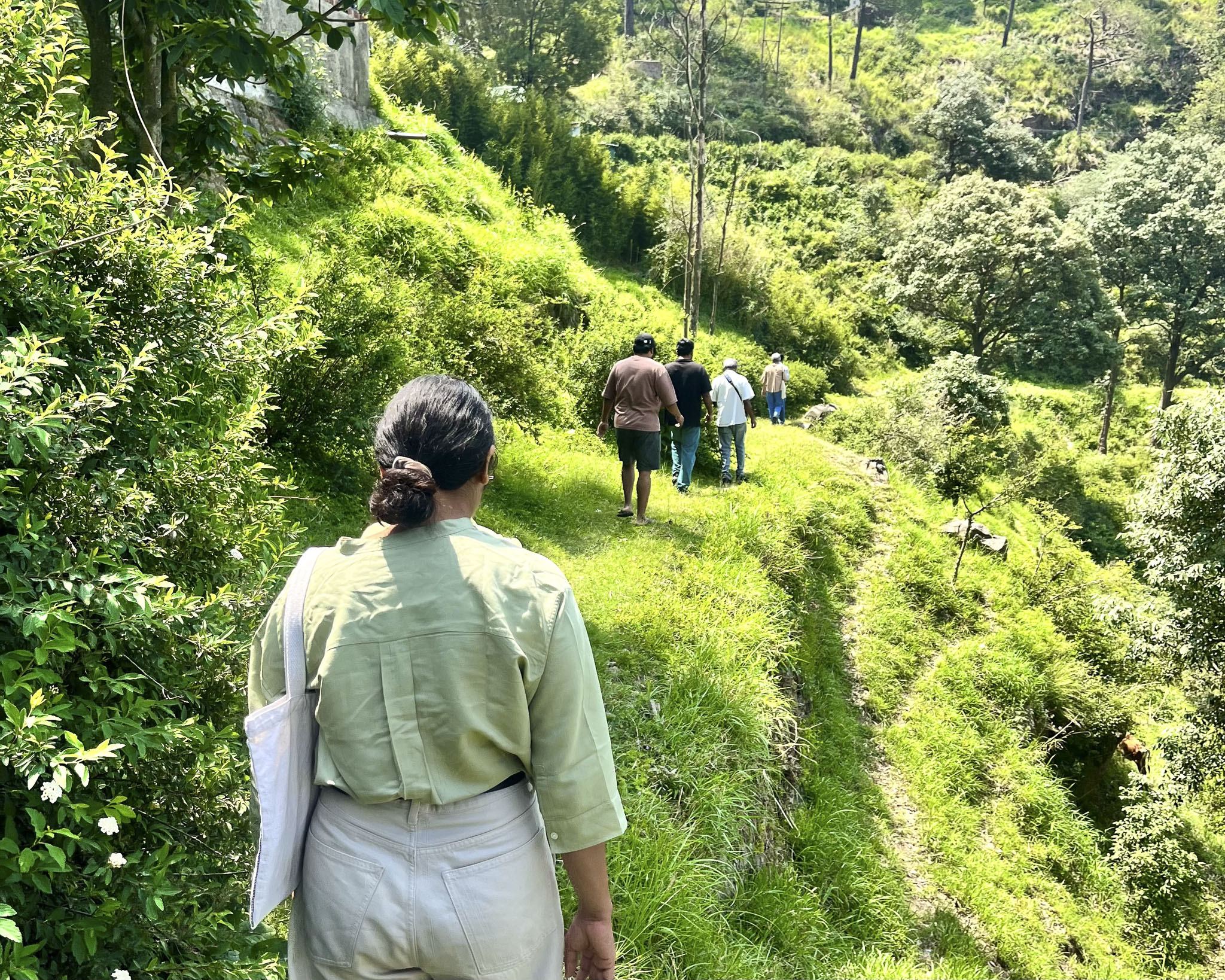Organised by The Foundation for Indian Contemporary Art (FICA), supported by Mrinalini Mukherjee Foundation (MMF)
SSAF Kasauli Art Project
5–15 June 2025
“From 5–15 June, the second cohort of the Emerging Artists Award (EAA+) attended a workshop and fellows’ meet at the SSAF Kasauli Art Project (SKAP) in Himachal Pradesh, accompanied by mentor BV Suresh and FICA team members Vidya Shivadas, Annalisa Mansukhani, and Dev Kakkar. Participating artists included Ashis Dhali, Ashis Kumar Palei, Bhikari Pradhan, Kiran Mungekar, Partha Banik, Rahee Punyashloka, Richa Arya, Ritika Sharma, and Soumava Das.
For FICA and the EAA+ platform, a central enquiry has been to ask after how creative practice is poised today. Building on that, a key endeavour has been to outline and understand how institutions, organisations, and networks extend, articulate, and implement systems of support in conversation with the specificities of the projects and the people they engage and think with. This workshop, loosely structured across variable formats of sharing and dialogue, allowed participants to reflect on what it means to closely read one another’s work within a peer network in progress. It opened up ways to examine key enquiries across practices, the urgencies of the contemporary moment, and the individual and shared preoccupations shaping artistic vocabularies today.
The sessions, spread over ten days, included informal sharings, presentations, screenings, and peer-led exercises that explored specific medium-led enquiries, personal and professional proclivities, and future imaginings. These were built on diverse languages and expressions of fugitivity, resistance, collaboration, collective making, ways of deep listening, and more immediate forms of response. As mentor and discussant, Suresh encouraged participants to ideate not just with each other, but also with themselves and with their inhabitation of Kasauli. This meant spending time absorbing what one saw, heard, felt, touched, and experienced at the site and in its environment, as well as with the relationships—no matter how transient or ephemeral—that emerged with what surrounded us. He encouraged a daily evening convergence over tea, shaped by each participant around what they carried with them: preoccupations, previous works, unfinished and incomplete projects, and what they were collecting in the moment—leaves, food, sunsets, insect bites, annotations, ways of reading, the concavity of the mountainside, bird sound escalations, staggering slopes, and the traces of the things we consumed and those that consumed us.
Thinking also about ‘simple acts’ and the possibilities they hold, each participant presented a distillation of their time at SKAP through an exercise, display, or performance. These included a range of concepts such as monumentality, sentiment, surveillance, assimilation, specificity, spatial negotiation, materiality and domesticity, experimentation, and invention. Many of these notions—and their associated meanings and interpretations—found tangents and juxtapositions within the artists’ practices, allowing for a compelling presentation of interests and intentionalities, conflicts and conundrums, that could be fleshed out and dissected through different entry points. It was also an opportunity to think through new registers, return to familiar territory, or approach existing enquiries with renewed vigour.
As simple acts and gestures, these distillations of emotion and experience evoked a critical range of questions that we intend to return to over the year: How do creative interventions bring new forms of dimensionality to a practice? How do we begin thinking not just of the gaze, but of where we situate and direct it? How do we language acts of translation, especially when translatability allows for movement across mediums and genres? How do we mediate our practices—for ourselves and for others? What role does the invitational play—for us and for those we bring into our work? What roles do we absorb as mediators of what we create and how we see?
It was compelling to see what the environs of SKAP (and Kasauli) offered each person—pause as well as provocation, reflection alongside spontaneous activation. We spent time thinking through the legacies of the SKAP space itself: its histories, personhoods, and the practices it continues to hold. Each artist, in their own way, reflected on what it means to hold, pursue, and carry preoccupations within their practice; how spaces can be perceived, experienced, and recalled in the present; and what encounters with site can lead to—the stories that can be told and the methods that might be cultivated to challenge, recalibrate, revisit, and rewrite narratives, inheritances, knowledges, and systems.
For all participants, it was a critical moment to reconsider the vantage points we wish to scale as artists, creators, and institutions, and how these can help not just in producing more, but in reflecting deeply on what we make, and where that act of making rests. As the second edition of EAA+ unfolds, it has been exciting to witness the evolving possibilities of collective thought and collaborative intention. The array of material registers, modes of re-narration, and entry points into diverse contexts shared here has shaped a dynamic beginning. We look forward to the year ahead—and to more such gatherings with our Fellows.”
— FICA
Sher-Gil Sundaram Arts Foundation was the Residency Partner for the programme.
